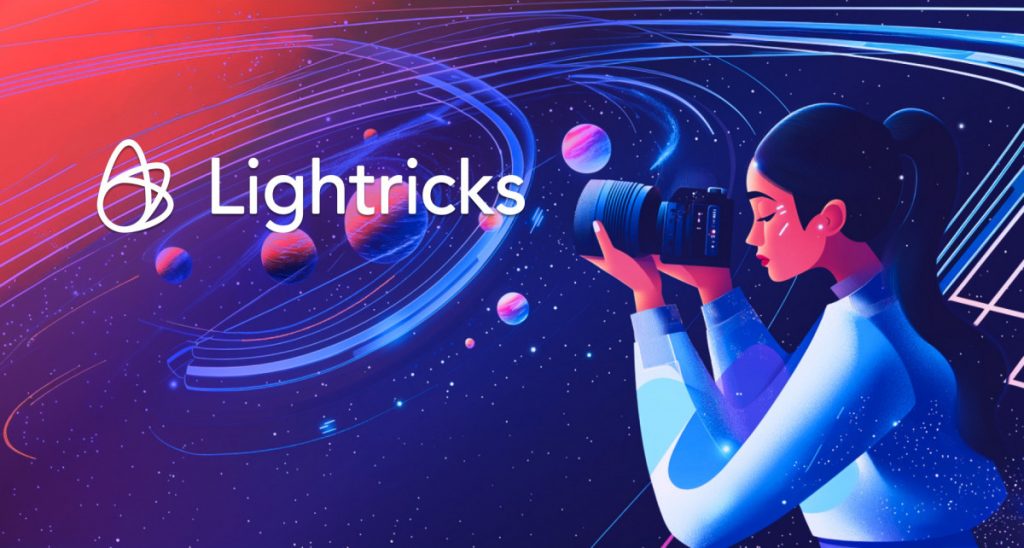Lightricks Competes With OpenAI, Google, And ByteDance In AI Video Market


In Brief
Lightricks has launched its new LTX-2 AI video model, claiming superior speed, 4K capability, cost efficiency, and licensed content use, entering a competitive market alongside Google’s Veo 3.1, OpenAI’s Sora 2, and ByteDance’s Seedance 1.0.

AI company Lightricks introduced its new video generation model, LTX-2, claiming it surpasses competitors in speed and efficiency. The fully open-source model can reportedly produce a six-second Full HD clip in as little as five seconds of compute time and is the first 4K-capable model able to generate video faster than playback.
The launch comes shortly after major releases from Google’s Veo 3.1, OpenAI’s Sora 2, and ByteDance’s Seedance 1.0, all of which have drawn attention for their capabilities. Lightricks highlights LTX-2’s advantages in speed, video quality, and simultaneous generation of background sounds, music, and dialogue. The model can produce 4K videos at 48 frames per second, though at slightly longer processing times, and emphasizes cost efficiency and open-source accessibility, allowing users to fine-tune the model to their specific needs.
LTX-2 is available via the Lightricks API and its professional filmmaking platform, LTX Studio, with the open-source release, including training data and weights, expected on GitHub next month. The API offers competitive pricing, starting at four cents per second for Full HD clips and 12 cents per second for 4K 48 fps videos with synchronized audio, targeting marketers and professionals who require both rapid iteration and high-quality output.
Unlike some competitors that require high-performance GPUs, LTX-2 can operate on a single consumer-grade GPU while maintaining visual quality, making it accessible for creators using standard laptops. Lightricks plans to enhance the platform further with features such as pose and depth controls, video input support, and alternative rendering options in the near future.
Lightricks Launches LTX-2 Amid Intensifying Competition In AI Video Generation
Lightricks’ release of LTX-2 comes at a competitive moment, though it remains uncertain whether it will maintain the company’s position as a preferred choice for AI developers, creative teams, marketers, and other professionals. Last week, Google launched Veo 3.1 within its Gemini application for paying users, as well as through its Vertex AI platform and Flow, its AI filmmaking tool, which offers functionality comparable to Lightricks’ LTX Studio.
Veo 3.1 allows users to upload separate image or video assets and merge them into a single video, add or remove objects, and extend clips up to one minute, matching the maximum output of Lightricks’ earlier LTXV-13B model. Assessing aesthetic quality across LTX-2, Veo 3.1, and OpenAI’s Sora 2 is subjective, as all three models appear closely matched. OpenAI has introduced a unique social media companion app for sharing, remixing, and discovering AI-generated videos, similar in concept to platforms like Instagram.
Sora 2 includes a feature called Cameo, which allows users to upload a face and generate videos featuring it, and like LTX-2 and Veo 3.1, it produces synchronized audio for its videos. OpenAI also highlights its model’s advanced physics engine as a differentiator. However, Sora 2 currently has limited accessibility: it is only available on iPhone with an invite code, while Android users can access it via the web but also require an invite.
Ethical And Copyright Concerns Rise As AI Video Models Expand, With Lightricks’ LTX-2 Leveraging Licensed Content
For creators, the expanding range of high-end AI video models offers new opportunities, but it also comes amid growing debate over the ethical and legal implications of AI-generated content.
OpenAI’s Sora 2, despite receiving positive feedback from users, has faced criticism for producing videos that appear to incorporate copyrighted material, with the company allowing such use by default unless rights holders formally opt out. This opt-out process requires studios and other intellectual property owners to request that their content not be included, and companies such as Walt Disney have already exercised this option, preventing Sora 2 from generating images of characters like Mickey Mouse.
Google’s Veo 3.1 has generated less controversy but is not entirely exempt from scrutiny, while ByteDance’s Seedream appears to freely use recognizable characters and public figures, creating videos featuring Spider-Man, Batman, and Superman. Lightricks’ LTX-2 may avoid some of these concerns, as the company has emphasized its use of licensed, high-quality content from partners such as Getty Images and Shutterstock to train its models.
Disclaimer
In line with the Trust Project guidelines, please note that the information provided on this page is not intended to be and should not be interpreted as legal, tax, investment, financial, or any other form of advice. It is important to only invest what you can afford to lose and to seek independent financial advice if you have any doubts. For further information, we suggest referring to the terms and conditions as well as the help and support pages provided by the issuer or advertiser. MetaversePost is committed to accurate, unbiased reporting, but market conditions are subject to change without notice.
About The Author
Alisa, a dedicated journalist at the MPost, specializes in cryptocurrency, zero-knowledge proofs, investments, and the expansive realm of Web3. With a keen eye for emerging trends and technologies, she delivers comprehensive coverage to inform and engage readers in the ever-evolving landscape of digital finance.
More articles

Alisa, a dedicated journalist at the MPost, specializes in cryptocurrency, zero-knowledge proofs, investments, and the expansive realm of Web3. With a keen eye for emerging trends and technologies, she delivers comprehensive coverage to inform and engage readers in the ever-evolving landscape of digital finance.


















































